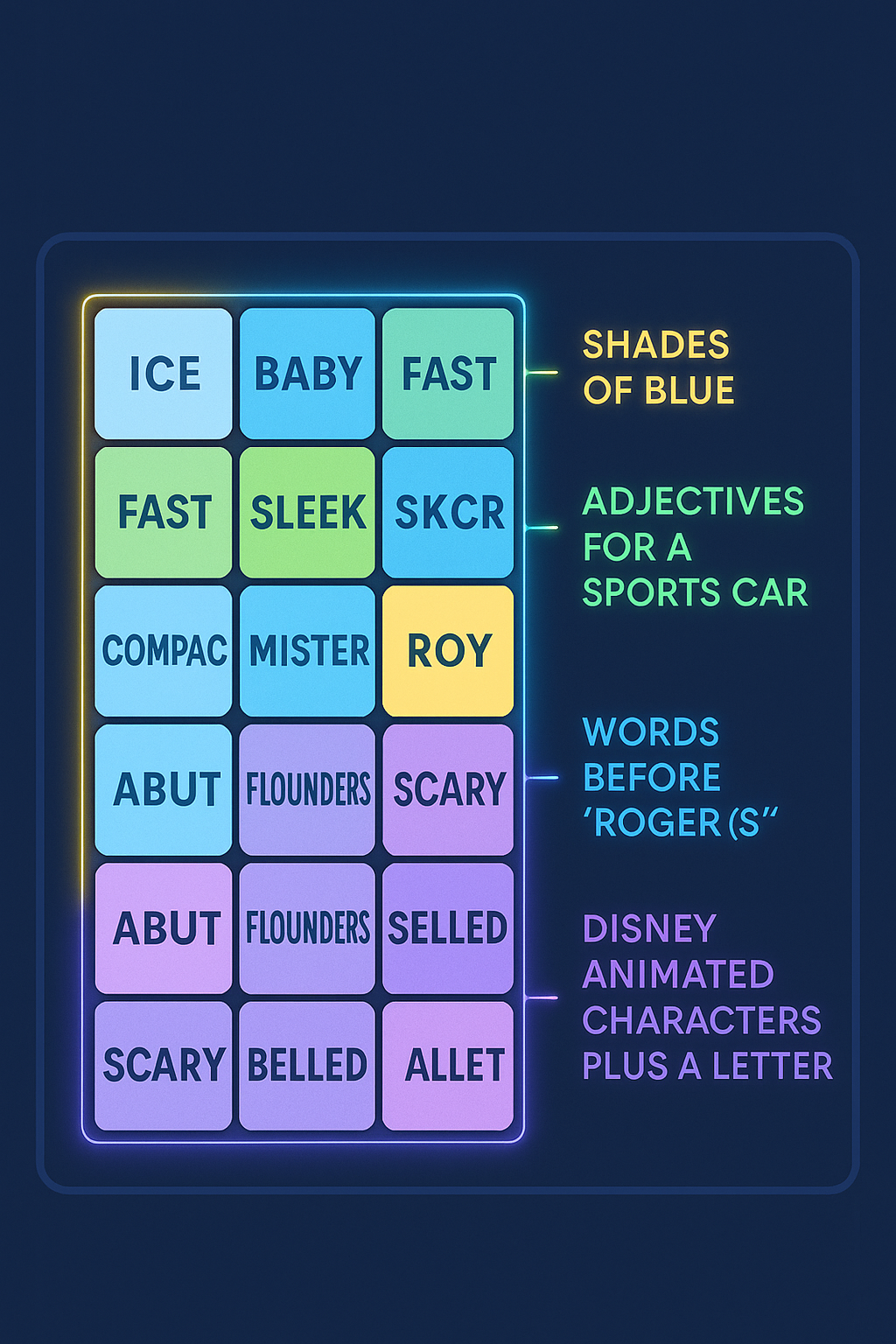General
Wood Roof Trusses: Types, Benefits, and Installation Tips

Wood roof trusses have become popular in most constructions due to the following reasons of strength, versatility, and cost. By learning the various kinds of wood roof trusses, the advantages associated with their use, and various installation tips, homeowners and builders are in a better position to make positive decisions.
Types of Wood Roof Trusses
Many designs of wood roof trusses are available in the market, and the choice of the design depends on the specific application, including the style of construction. Here are some of the most common types:
- King Post Truss
- Description: The basic type of which comprises two top chords, one bottom chord and a vertical post known as the king post.
- Use: Most suitable for use in short bridges or in small structures such as homes or buildings with limited stories.
- Queen Post Truss
- Description: A type of king post truss with two vertical posts, known as the queen posts, and an additional horizontal beam.
- Use: Appropriate where spans are moderate, and it offers more support and stability as compared to the king post trusses.
- Fink Truss
- Description: This design has a W-shape web at the middle in a triangular frame.
- Use: It is usually applied in the residential roofing systems since it can spread loads over a large area.
- Howe Truss
- Description: Diagonal web members which slope towards the middle of the structure as well as the vertical web members are present.
- Use: Common in bridges but can also be employed in establishments whose roofs feature large spans for additional support.
- Scissor Truss
- Description: It has the two bottom chords which interlock each other to give an impression of a vaulted ceiling.
- Use: Used on open structures, cathedral ceilings or joists that can give out both beauty and support.
- Attic Truss
- Description: Intended for the provision of further living space or other utility such as a storeroom in the roof.
- Use: Perfect for people who want to construct a house with an attic or additional space while only a little expanding the plot area.
Benefits of Wood Roof Trusses
Wood roof trusses offer numerous advantages that make them a popular choice in both residential and commercial construction:
- Cost-Effective
- Prefabricated trusses are cheaper than constructing a roof on-site because there are minimal costs on both labor and material.
- Strength and Durability
- One of the important characteristics of a wood truss is that it sustains loads in a most efficient manner throughout the structure and it can easily support heavy roof loads.
- Versatility
- The wood trusses come in different types of designs and sizes suitable to complement the architectural enshrinement of a building as well as performing its intended function.
- Speed of Installation
- Trusses are transported to the construction site, for assembly which helps in saving time compared to stick built construction methods.
- Design Flexibility
- Tailored trusses can be created to fulfill engineering requirements providing versatility in designing roofs.
- Eco-Friendly
- Wood is a renewable material and contemporary trusses are frequently crafted from harvested timber making them an eco friendly choice.
Installation Tips for Wood Roof Trusses
Installation procedures concerning wood roof trusses are vital in as much as truss strength and durability are concerned. Here are some essential tips:
- Pre-Installation Preparation
- Make sure that the construction site is flat and is free of any form of hindrance be it organic or demarcated.
- Ensure that all trusses and the used materials have arrived, and those in a damaged state have been identified.
- Handling and Storage
- Essentials of storing trusses are to keep them well off the ground and cover them well to prevent the elements and moisture from damaging them.
- While handling the trusses proper lifting techniques should be adopted to prevent damage on them.
- Setting Trusses
- Due to the apparent weight of the trusses, it would be necessary to use a crane or any lifting equipment to ensure proper alignment of the trusses.
- Beginning with the first truss it is mounted on one side of the building and temporarily supported by temporary supports.
- Securing Trusses
- Use metal truss clips or hurricane ties to attach the trusses to the top plates of the walls.
- Ensure all connections are tight and secure, following the manufacturer’s guidelines and local building codes.
- Bracing
- Install temporary and permanent bracing to keep trusses aligned and stable during and after installation.
- Follow engineering specifications for bracing to ensure the roof system can withstand loads and stresses.
- Sheathing
- Apply roof sheathing (plywood or OSB) over the trusses, securing it with nails or screws as per building codes.
- Ensure the sheathing is properly aligned and gaps are minimized to provide a solid base for roofing materials.
- Inspection and Final Adjustments
- Conduct a thorough inspection to ensure all trusses are properly installed and braced.
- Make any necessary adjustments before proceeding with roofing material installation.
Conclusion
Among different types of constructed structures, wood roof trusses represent one of the most valuable and effective types of construction designing that can render a large number of advantages, including cost effectiveness, solidity, and versatile opportunities for designing.
With help of the information about classification of trusses and some crucial recommendations for their installation, the owners of houses and constructions, as well as the builders, can achieve favorable results in terms of durability and the aesthetic look of roof constructions.
In any roofing project for any home whether a residential home or a commercial building then the wood trusses are actually very reliable.
General
80F to C: Convert Fahrenheit to Celsius Easily in 2025

Looking to convert 80°F to Celsius in 2025? You’re in the right place. Whether you’re cooking, traveling, studying, or simply curious, understanding how Fahrenheit converts to Celsius can make life easier. This guide covers everything you need: from the exact temperature conversion to an easy-to-use chart, a calculator tool, and frequently searched Fahrenheit to Celsius conversions.
🔥 What is 80°F in Celsius?
To convert 80°F to Celsius, use this formula:
C = (F – 32) × 5/9
So, (80 – 32) × 5/9 = 48 × 5/9 = 26.67°C
➡️ Answer: 80°F = 26.67°C
This is a pleasantly warm temperature — perfect for a summer day or a heated indoor environment.
📊 Fahrenheit to Celsius Quick Reference Chart
| Fahrenheit (°F) | Celsius (°C) |
|---|---|
| 32°F | 0°C |
| 50°F | 10°C |
| 60°F | 15.56°C |
| 70°F | 21.11°C |
| 80°F | 26.67°C |
| 90°F | 32.22°C |
| 98.6°F | 37°C (Body Temp) |
| 100°F | 37.78°C |
| 104°F | 40°C |
| 212°F | 100°C (Boiling Point) |
This chart is handy for everyday temperature reference in the kitchen, outdoors, or classrooms.
🔢 Fahrenheit to Celsius Online Calculator
🧠 Why This Conversion is Useful in 2025
As global travel, culinary standards, and science education evolve, more people are shifting between Fahrenheit (used mainly in the U.S.) and Celsius (used worldwide). Especially in 2025, where tech gadgets and smart thermostats show dual units, knowing how to convert 80°F to C and beyond is very helpful.
🔍 Related Popular Conversions
| Fahrenheit | Celsius |
| 60°F | 15.56°C |
| 70°F | 21.11°C |
| 75°F | 23.89°C |
| 80°F | 26.67°C |
| 85°F | 29.44°C |
| 90°F | 32.22°C |
| 98.6°F | 37°C |
| 100°F | 37.78°C |
These are commonly searched temperatures for weather, body temperature, and comfort settings.
🌐 Internal Resources
- Read more tech guides on our homepage: Space Coast Daily
- Also check: What is Janitor AI – Features & Use Cases in 2025
🧾 Final Thoughts: Easy Conversions = Smarter Living
Converting 80F to C is simple, but essential. Whether you’re adjusting your thermostat, preparing international recipes, or just curious about weather changes in 2025, having a reference guide or calculator can save time.
Bookmark this page and share it — and let your readers enjoy the simplicity of temperature conversion in a modern world.
📈 SEO Meta Details
- Title: 80F to C – Convert 80 Degrees Fahrenheit to Celsius (2025 Guide)
- Meta Description: Quickly convert 80°F to Celsius with our 2025 guide. Includes formula, chart, live calculator, and popular conversions for easy reference.
- Slug/URL: /2025/07/80f-to-celsius-conversion-guide
- Tags: Fahrenheit to Celsius, 80F to C, Temperature Conversion, Celsius Chart, 2025 Weather Guide
🖼️ Featured Image Prompt:
A clean and modern infographic showing a thermometer with Fahrenheit and Celsius scales side-by-side. Bright numbers like 80°F = 26.67°C clearly labeled. Background has sunny weather or a kitchen scene. Use soft blue, white, and red tones. Ideal size: 1200x630px.
Posted by: Space Coast Daily Uk Team
Date: July 2025
General
Prayer for Healing: How to Seek Divine Comfort in Difficult Times

🙏 Introduction:
In times of physical pain, emotional distress, or spiritual confusion, many turn to prayer for healing as a source of strength and comfort. Whether you’re battling illness or supporting a loved one, healing prayers can offer hope and peace when medicine and logic fall short. This article explores the meaning, types, and real-life power of healing prayer — helping you connect deeply with faith and find guidance during trying times.
🕊️ What Is a Prayer for Healing?
A prayer for healing is a spiritual invocation asking for divine intervention in times of illness, emotional turmoil, or spiritual crisis. It is not limited to physical ailments; people also pray for emotional healing, mental wellness, and peace of soul.
✝️ Common Elements of a Healing Prayer:
-
Faith in a higher power (God, the Universe, etc.)
-
Sincerity in intention and delivery
-
Specificity about the illness or need
-
Trust in the outcome, whether immediate or gradual
📝 Note: Healing prayers vary across religions and cultures but carry a common core: the desire for restoration, comfort, and divine grace.
💡 Why Do People Pray for Healing?
1. To Find Hope When Science Falls Short
Even the most advanced medical treatments may not address the emotional or spiritual toll of illness. Prayer brings hope when medicine cannot.
2. To Feel Connected to God or a Higher Power
In moments of weakness, prayer serves as a bridge to the divine — giving people a sense of spiritual presence and support.
3. To Empower the Mind-Body Connection
Studies have shown that positive beliefs and mental peace can enhance physical recovery. Prayer is a powerful tool for calming the mind and reducing stress.
[EXTERNAL LINK: Include link to a medical or psychological study supporting mind-body connection]
🙌 Types of Healing Prayers
💗 1. Physical Healing Prayers
Used when someone is ill or recovering from surgery or injury.
Example:
“Lord, I ask for Your healing touch. Remove the pain, restore the body, and renew strength.”
🧠 2. Emotional and Mental Healing Prayers
Ideal for anxiety, depression, heartbreak, or grief.
Example:
“God, calm the storms within me. Heal my mind, soothe my heart, and fill me with peace.”
🤲 3. Spiritual Healing Prayers
When someone feels spiritually lost, confused, or disconnected.
Example:
“Father, bring me closer to You. Remove my doubts, guide my path, and renew my faith.”
🌎 4. Intercessory Healing Prayers
Prayers offered on behalf of someone else.
Example:
“I lift up [Name] to You. May Your healing light surround and restore them completely.”
📜 5 Powerful Prayers for Healing
Here are some timeless prayers used by millions across faiths:
-
The Serenity Prayer (for peace and healing):
“God, grant me the serenity to accept the things I cannot change…”
(Commonly used in AA and recovery communities) -
Psalm 23:
“Though I walk through the valley of the shadow of death, I will fear no evil…”
(A prayer of comfort and spiritual strength) -
Catholic Prayer for Healing (St. Padre Pio):
“Heavenly Father, I thank You for loving me. I ask You to heal those who are sick…”
-
Islamic Dua for Healing (Shifa):
“Allahumma Rabban-nas, adhhib al-ba’sa, ishfi antash-Shafi, la shifa’a illa shifa’uk…”
Translation: “O Allah! Lord of mankind, remove this disease and cure [him/her].” -
Personal Prayer:
“Lord, You are my strength and healer. Touch me with Your love and make me whole again.”
🔁 How to Create Your Own Prayer for Healing
You don’t always need pre-written words. Creating a personal healing prayer can be powerful and authentic.
✅ Steps:
-
Start by addressing your higher power.
-
State what you need healing for — body, mind, emotions, or spirit.
-
Express trust or surrender to divine will.
-
Close with words of gratitude or hope.
Example:
“Dear God, I feel broken and weary. Please restore my body and uplift my spirit. I believe in Your power. Thank You for hearing my cry.”
🧘 Additional Practices to Enhance Healing Prayers
-
Meditation before or after prayer
-
Lighting a candle as a spiritual symbol
-
Reading healing scriptures (e.g., James 5:14–15, Quran 26:80)
-
Journaling your prayer journey
-
Asking others to pray with you or for you
[INTERNAL LINK: Add link to a related article on “Benefits of Meditation & Prayer” or “How to Build a Prayer Routine”]
🧾 Conclusion: Trust the Process of Divine Healing
Whether you’re facing a health crisis or emotional pain, prayer for healing provides a sacred path to peace, clarity, and hope. It might not always result in immediate physical recovery, but it does offer spiritual resilience that’s just as important.
Let prayer become your refuge, not just in pain, but as a daily habit of inner connection.
❓ FAQ: Prayer for Healing
1. Does prayer really help with healing?
Yes, many people find spiritual peace and emotional strength through prayer, which can positively impact recovery.
2. Do I need to follow a specific religion to pray for healing?
No. Healing prayers are personal. Anyone can pray, regardless of religious affiliation.
3. Can I pray for someone else’s healing?
Absolutely. Intercessory prayer is a powerful way to show love and support.
4. How often should I pray for healing?
There’s no set rule. Pray as often as you feel the need — once a day or multiple times.
5. What if I don’t see results?
Healing can be physical, emotional, or spiritual. Trust that your prayer is heard, even if the results aren’t immediate.
General
Connections Clues – The Ultimate Guide to Winning NYT’s Daily Word Puzzle (2025)

Do you find yourself hooked on the New York Times’ trending word game “Connections”? You’re not alone. With its mix of logic, language, and lateral thinking, Connections has become one of the most popular daily word games worldwide. But if you’re stuck or looking to improve, understanding “Connections clues” is your key to consistent success.
In this guide, we’ll explain what Connections clues are, how they work, and how you can use them to solve each puzzle faster — especially if you’re eyeing that perfect score!
✅ What Is the NYT Connections Game?
Connections is a free daily puzzle game by The New York Times, available on its website and Games app. The objective is simple but tricky:
-
You’re given 16 seemingly random words in a 4×4 grid.
-
Your job is to group them into four sets of four based on a hidden connection — such as a common category, wordplay, or phrase.
-
Each group forms a meaningful link like:
-
Colors (e.g. navy, teal, maroon, jade)
-
Movie characters (e.g. Elsa, Simba, Mulan, Nemo)
-
Words that rhyme (e.g. bright, light, fight, kite)
-
Synonyms (e.g. happy, joyful, cheerful, gleeful)
-
🔍 What Are “Connections Clues”?
Connections clues are subtle hints — official or unofficial — that help you identify the themes behind each group in the puzzle.
💡 They Come in 3 Main Forms:
-
Themed Hints (Unofficial):
Many blogs and newsletters (including Forbes and Pastimes) share daily clue summaries like:-
🟨 Yellow group: “Types of pasta”
-
🟩 Green group: “Singers named Taylor”
-
🟦 Blue group: “Tech acronyms”
-
🟪 Purple group: “Pun-based animals”
-
-
Color Coding Inside the Game:
Each correct group is color-coded:-
🟨 Yellow – Easiest group (usually basic or obvious)
-
🟩 Green – Medium difficulty
-
🟦 Blue – Harder group, often abstract or thematic
-
🟪 Purple – Usually the hardest, often involving puns or wordplay
-
-
Daily Word Group Examples:
You’ll often find groupings like:-
BABY, ICE, SKY, POWDER = Shades of blue
-
FAST, SLEEK, SPORTY, COMPACT = Car descriptions
-
GINGER, ROY, MISTER, JOLLY = Words before “Roger(s)”
-
These clues don’t appear directly in the NYT game, but expert players and bloggers interpret them based on the word groupings each day.
🧠 How to Use Connections Clues to Your Advantage
If you want to consistently solve the game and even hit perfect streaks, use these tips:
1. Start With the Obvious
Look for basic categories — colors, animals, numbers, or food. These often fall under the yellow group.
2. Watch for Wordplay
Purple clues can include homophones, hidden meanings, or misspelled versions of pop culture characters (e.g. BELLED = Belle from Beauty and the Beast).
3. Look at the Grid as a Whole
Groupings like “BABY, SCARY, GINGER, SPORTY” might make you think of the Spice Girls — which was a trick in a recent July puzzle! Don’t fall for decoys.
4. Shuffle the Grid
The game allows you to shuffle the word positions. This visual change can help you spot unexpected links.
5. Use External Clue Blogs
Sites like Forbes, Pastimes, and even Reddit’s r/ConnectionsNYT subreddit share daily hints. Just search:
“Connections clues July [Date]” and you’ll likely find a helpful hint thread.
🔗 Examples of Connections Clues from Recent Games
Let’s look at a real example from the July 14, 2025 NYT Connections game:
Words:
SPORTY, JOLLY, ICE, GINGER, BABY, POWDER, COMPACT, SCARY, FAST, FLOUNDERS, MISTER, SKY, BELLED, ABUT, ROY
Clues Interpreted by Experts:
-
🟨 Yellow: Shades of blue – ICE, POWDER, SKY, BABY
-
🟩 Green: Car adjectives – COMPACT, FAST, SLEEK, SPORTY
-
🟦 Blue: Before “Roger(s)” – JOLLY, MISTER, ROY, GINGER
-
🟪 Purple: Disney characters + letter – SCARY (Scar), BELLED (Belle), ABUT (Abu), FLOUNDERS (Flounder)
This combination of creative clues + pattern recognition is what makes the game both challenging and fun!
📱 Where Else Can You Find Connections Clues?
-
NYT’s official archive (for subscribers)
-
Discord communities dedicated to word games
-
Newsletter round-ups like “Pastimes”
-
Gaming sections on Forbes and similar blogs
-
Reddit puzzle communities
These sources often post early hints before the answers go public.
🎯 Final Thoughts: Should You Play Using Connections Clues?
Absolutely. Using Connections clues isn’t cheating — it’s smart strategy. They help you:
-
Save lives (you only get 4 mistakes!)
-
Train your brain in word associations
-
Learn new vocabulary and categories
-
Have fun with a daily mental challenge
Whether you’re solving solo or competing with friends, clues give you the edge.
🔗 Cowordle – A Collaborative Twist on the Wordle Craze
🔗spacecoastdaily.co.uk
-

 Tech2 weeks ago
Tech2 weeks agoWhat is Janitor AI? Features, Use Cases & How to Use It Safely in 2025
-

 Tech3 weeks ago
Tech3 weeks agoPortalar (PortalAR) Guide 2025: How AR Portals Transform Environments
-

 news2 weeks ago
news2 weeks agoChatGPT vs Google Gemini: Which AI Wins in 2025?
-

 news2 weeks ago
news2 weeks agoBinomo Scam Exposed: Real Truth Behind the Trading App You Must Know in 2025
-

 General3 weeks ago
General3 weeks agoUK Visa Fees 2025: Complete Breakdown for Students, Workers & Tourists
-

 news3 weeks ago
news3 weeks agoJames Webb Telescope News: Exploring the Frontiers of the Universe
-

 Gaming3 weeks ago
Gaming3 weeks agoBest Gaming Accessories Under $50 in 2025 – Ultimate Budget Gaming Upgrades
-

 Fashion3 weeks ago
Fashion3 weeks agoSheer Maxi Dress 2025: The Chic Look Everyone Will Be Wearing







